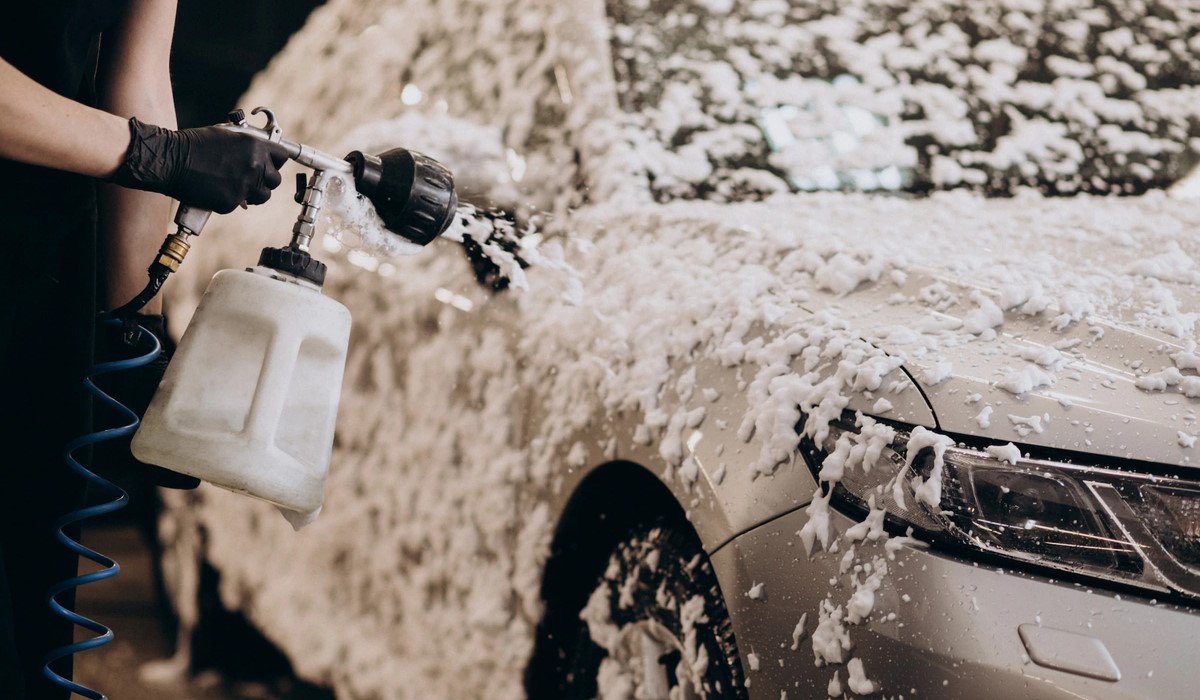
Car valeting refers to the meticulous cleaning, polishing, and conditioning of a vehicle, both inside and out, to restore its appearance and maintain its condition. Unlike a standard car wash, valeting involves more detailed and thorough cleaning processes, often done by professionals or enthusiasts with specialized skills and equipment. The primary goal of car valeting is to enhance the vehicle’s aesthetic appeal and protect its surfaces from wear and tear over time.
Benefits of Car Valeting
Car valeting offers numerous benefits beyond just a clean car. It helps in preserving the vehicle’s paintwork and interior materials, thereby extending its lifespan and maintaining its resale value. Regular valeting also protects the car from environmental elements such as UV rays, road grime, and pollutants, which can otherwise damage the exterior and interior surfaces.
Types of Car Valeting Services
Exterior Valeting Services
Exterior valeting services focus on cleaning and enhancing the outer surfaces of the vehicle. This includes washing to remove dirt and grime, waxing to add a protective layer and shine, and polishing to eliminate minor scratches and swirl marks. These processes not only improve the car’s appearance but also provide a layer of defense against elements like rain, snow, and sun exposure.
Interior Valeting Services
Interior valeting involves thorough cleaning of the car’s cabin, including vacuuming carpets and upholstery, wiping down dashboard and trim surfaces, and conditioning leather or vinyl materials. This helps in maintaining a clean and hygienic environment inside the vehicle, removing dust, allergens, and odors that can accumulate over time.
Steps Involved in Car Valeting
Car valeting typically follows a systematic approach to ensure comprehensive cleaning and detailing:
- Pre-wash Inspection and Preparation: Assessing the vehicle’s condition and identifying areas needing special attention, such as stains or scratches.
- Exterior Cleaning Process: Washing the car using appropriate shampoos and cleaning agents, followed by rinsing and drying to prevent water spots.
- Interior Cleaning and Detailing Process: Vacuuming carpets and seats, cleaning windows and mirrors, and treating surfaces with suitable products to restore shine and protect against UV damage.
- Final Touches and Inspection: Checking the vehicle for any overlooked spots or imperfections, ensuring every part of the car is clean and polished to perfection.
Tools and Products Used in Car Valeting
Effective car valeting requires the use of specialized tools and high-quality products:
- Car Cleaning Products: These include pH-balanced shampoos, car waxes, polishes, and detail sprays designed to clean and protect different surfaces without causing damage.
- Equipment: Vacuum cleaners with various attachments, microfiber cloths, detailing brushes, and applicators for applying waxes and sealants.
- Protective Coatings and Sealants: Ceramic coatings and sealants provide long-lasting protection against contaminants and enhance the car’s gloss and hydrophobic properties.
DIY Car Valeting Tips
While professional valeting services offer comprehensive cleaning and detailing, there are basic steps you can follow to maintain your car’s appearance at home:
- Washing: Use a two-bucket method to minimize swirl marks. Rinse thoroughly before applying shampoo and dry with a microfiber towel.
- Interior Cleaning: Vacuum regularly and use interior cleaners appropriate for different surfaces. Avoid using silicone-based products on the dashboard.
- Protective Maintenance: Apply wax or sealant every few months to protect the paint and maintain shine. Clean windows and mirrors with a streak-free glass cleaner.
Professional vs. DIY Car Valeting
Choosing between professional valeting services and DIY methods depends on factors like time, expertise, and desired results:
- Advantages of Professional Valeting Services: Professional valeters have expertise and access to specialized equipment and products. They can achieve superior results and save you time and effort.
- Cost Considerations and Affordability: While professional services may initially seem more expensive, they often provide better long-term value by maintaining your car’s condition and resale value.
Common Mistakes to Avoid in Car Valeting
To achieve the best results and avoid damaging your vehicle during valeting, steer clear of these common mistakes:
- Using Incorrect Products: Using harsh detergents or abrasive materials can scratch the paint or damage delicate interior surfaces.
- Neglecting Interior or Exterior Surfaces: Ensure thorough cleaning of all areas, including door jambs, undercarriage, and hard-to-reach spots.
Conclusion
Car valeting is not just about keeping your vehicle clean; it’s about preserving its condition and enhancing its longevity. By understanding the different types of valeting services, choosing the right products and techniques, and knowing when to seek professional help, you can maintain your car’s appearance and value for years to come.

